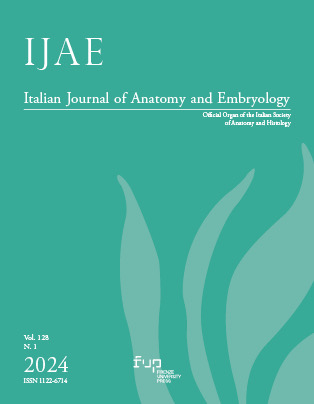A comparative quali-quantitative analysis of student perspectives on microscopic anatomy labs: traditional glass slide versus virtual slides approach
Published 2024-09-03
Keywords
- microscopy,
- virtual microscopy,
- microanatomy,
- medical education,
- technology-enhanced instruction
How to Cite
Copyright (c) 2024 Michela Relucenti, Claudio Barbaranelli, Loredana Cristiano, Pietro Familiari, Selenia Miglietta, Orlando Donfrancesco, Giuseppe Familiari

This work is licensed under a Creative Commons Attribution 4.0 International License.
Abstract
This study, with its potential to significantly impact the field of medical education, is a testament to the active participation and invaluable contributions of a cohort of 59 first-year medical students. These students, the future of medical practice, shared their perspectives on two distinct methods of learning microscopic anatomy—traditional glass slide and microscope-based lessons versus online microscopical anatomy lessons employing the virtual slides in the Histology Guide website. They attended traditional microscopic anatomy lessons using a histology glass slide and a light microscope; the same group attended online lessons using virtual slides. Their feedback was gathered through a comprehensive questionnaire of 27 questions, which assessed effectiveness, convenience, engagement, and overall preference. Our quantitative and qualitative results clearly show that the same students who attended both the in-person and distance microscopic anatomy labs, while appreciating the usefulness and effectiveness of the two types of experiences, significantly prefer the in-person microscopic anatomy labs, judging the latter to be more interactive, due to the possibility of being able to directly use an optical microscope and slides containing histological preparations and the opportunity to work in groups with other students, being able to interact directly with the lecturer in the classroom. The remote experience of the light microscopy lab also allowed them to access it at their preferred times and review the lab several times during their available time. As reflected in the findings, these students’ preferences and perceptions regarding these contrasting educational modalities offer insights crucial for refining anatomy teaching practices in medical education.
Metrics
No metrics found.

